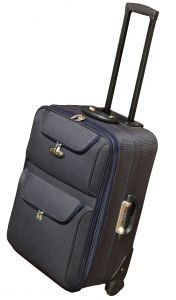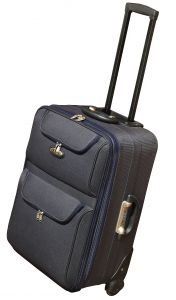Travel Tips


TRAVEL TIPS
The humble duffel bag has evolved from its military past into one of the most ubiquitous and adaptable forms of luggage. The specific origin of the duffel bag is unclear, but almost certainly duffel bags evolved from the military rucksack or kit bag. The name of the bag is from the Belgian town of Duffel, which was known in the 17th century for the production of a thick and durable woolen cloth that was used to make military uniforms and various kinds of luggage.
In its simplest form, the duffel bag is a cylindrical bag with a long straight zipper and fabric handles. Military varieties of the canvas duffel bag can be found in surplus stores from coast to coast. However, as modern travel changed, the duffel bag evolved as a staple of the civilian world as well.
Duffel bags have even found some measure of elegance. Smaller bags and sport bags can now be found made of quality leather. Though not as tough and water-resistant as Denier, leather bags are durable and fashionable carry-ons or gym bags.
The zippers on duffel bags, a traditional weak point of older designs, have also evolved. Gone are the small-toothed cheap metal zippers found in older military models, replaced with larger and smoother operating coated zippers. Some are self-repairing, and all are much easier to clear, should fabric become entangled in the zipper. Mounted rings or double zippers have been added to some designs to provide a measure of security. Small padlocks, often sourced from the after-market, can be used to lock zippers together or to lock the zipper to a ring, thereby providing an added measure of security when traveling.
For some applications, the simple smooth cylindrical bag with a straight zipper still provides the best stowing and carrying options for the least price, and this design, in the newer fabrics, is still common. However, now there are many shapes and configurations. Bags with square rather than round ends are now the most common shape. Zippers are often C-shaped, allowing somewhat more flexibility in accessing the contents of the bag. And bags have sprouted pockets.
Many designs have zipped pocket on the top, the sides and the ends, providing more storage space and the means to separate items according to a packing plan. Now remembering which pocket the socks are stashed in is often more of a problem than finding space for that extra pair of socks!
The latest feature found in many bags today is a plastic platform base incorporating wheels and an extensible hard handle for pulling heavy bags through airports. Even these bags, complete with many pockets and wheels, will lay flat for storage.
The duffel bag has become a travel standard because they are stuff-able. You can almost always find the space to stuff in some other piece of clothing. And duffel bags adapt their shape to the shape of the space in which they are stowed, allowing more luggage in less space. Adaptable, flexible, rugged, and easy to stow, the duffel bag will probably be around in another 300 years!
CONTACT
Telephone: 810-653-3990
Toll Free: 866-653-3990
Fax: 810-653-6110
E-mail: stokes@jimmeltours.com
LOCATION
8347 Davison Rd
Davison, MI 48423


